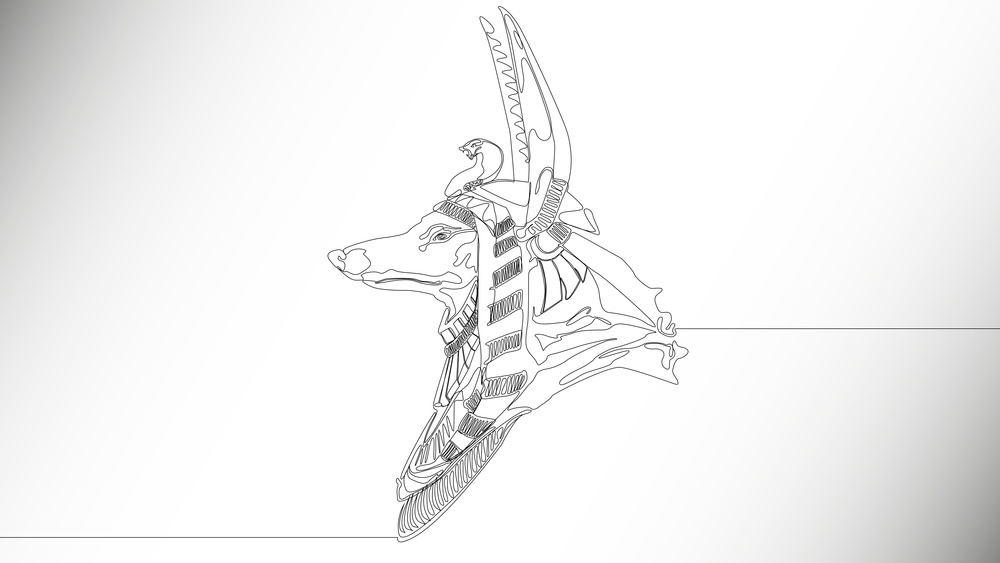In the ancient world, Egyptians believed that the soul of a person was represented in the form of an animal.
The ancient Egyptians had several ways of depicting their lives after death, including how they would be shown in the otherworld.
The first method was mummification. Egyptians believed that the soul of a person was represented in the form of an animal.
The ancient Egyptians had several ways of depicting their lives after death, including how they would be shown in the otherworld.
The first method was mummification. Mummification served as a way to preserve a body and make sure that it didn’t decay over time.
It also made it easier for priests to perform rituals on behalf of the dead by placing them inside coffins and having them on display at temples or tombs instead of risking damage to their bodies if they were buried underground or left out in the open air unattended.
In addition to mummification, Ancient Egyptians also believed that your soul could be captured into another entity (such as an animal).
This is known as Tattooing. Through tattooing, you depict your life after death by means of visual artwork—similar to drawing a picture rather than simply writing down words from memory or from paper.
Horus anubis tattoo meaning
In ancient Egyptian mythology, Osiris was the god of fertility, plants, and harvest. He was one of the most important deities in Egypt after the sun god Ra.
His son and heir to his throne were Horus. In Egyptian mythology, Osiris’s wife Isis discovered him dead and cut his body into pieces which she scattered across the land.
Isis found all but one of his body parts, so she held a festival for 40 days in order to find out who could bring Osiris back to life.
The person with the heart piece (which represented their own heart) brought him back to life, so he rose up from hell (where he had been killed) to once again rule over Egypt as king with his wife Isis at his side.
The person who had brought him back to life became known as Anubis (the jackal or dog-headed deity associated with death).
Osiris tattoo meaning
Osiris was a god in ancient Egypt and his name means “he who is far away” or “he who is hidden.”
Ancient Egyptians believed that the soul of a person was represented in the form of an animal.
The ancient Egyptians had several ways of depicting their lives after death, including how they would be shown in the otherworld. The first method was mummification.
Mummification served as a way to preserve a body and make sure that it didn’t decay over time.
It also made it easier for priests to perform rituals on behalf of the dead by placing them inside coffins and having them on display at temples or tombs instead of risking damage to their bodies if they were buried underground or left out in the open air unattended.
Horus and anubis tattoo
Anubis, who was the son of the jackal god, was the god of mummification. He was also a god of the dead and protector of tombs.
Anubis’s animal form is that of a black jackal with very large, wide-set eyes. He would guard the entrance to the underworld and serve as an escort to the souls of deceased pharaohs.
He had a sense of humor because he would occasionally allow worthy people to escape from him into the afterlife without having to go through a difficult trial.
Anubis was typically depicted as an ibis or baboon that wore a red or green crown on his head which symbolized his role in mummification and protection against dying.
Anubis tattoo arm
The ancient Egyptians believed that the afterlife was represented through an animal. The first method of depicting this life after death was through mummification.
Mummification served as a way to preserve a body and make sure that it didn’t decay over time.
It also made it easier for priests to perform rituals on behalf of the dead by placing them inside coffins and having them on display at temples or tombs instead of risking damage to their bodies if they were buried underground or left out in the open air unattended.
In ancient Egypt, people believed in many different things about the afterlife and thought a lot about how they would be depicted when they died.
One example is tattooing which is a form of art representing your life after death.
Anubis tattoo chest
…in ancient Egyptian mythology, Anubis was a jackal-headed god of mummification and the afterlife.
His name means “He who is upon his mountain.” He is known to have originally been a creation of the goddess Nephthys, wife of Set.
The word “Anubis” has become a word for the embalming process in general. Some sources credit Imhotep with developing the process as well as inventing surgery, medicine, and public health.
Anubis was not just a god of death; he also represented other human lifecycles, including birth and fertility.
Born from the tears of Nut (Goddess of Fertility), Anubis was depicted as having the head of a jackal or a man with the head of a jackal, with curved ears and sidelong glances. His belly and paw print are marked with red ink to signify ferocity while his collar is adorned with an Ankh symbol which represents life.



